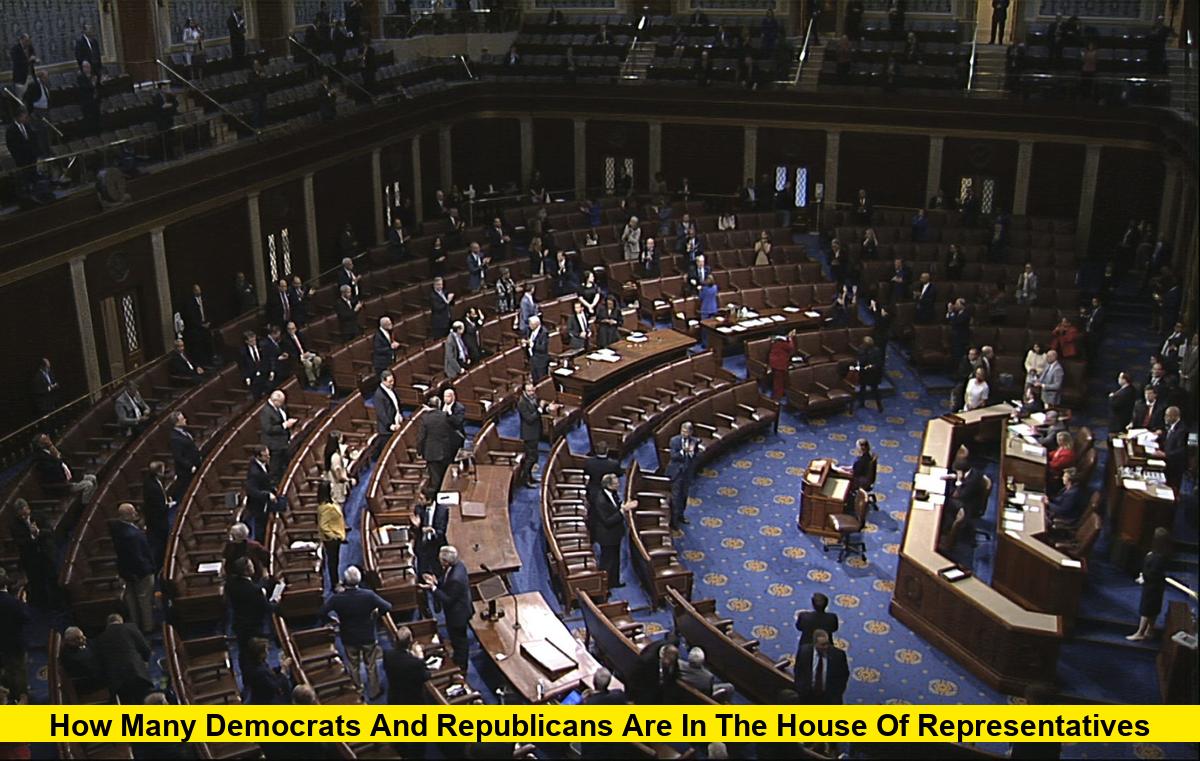The makeup of the U.S. House of Representatives determines the flow of legislation, the subjects of debate, and the power of Congressional leadership. For anyone tracking American politics, the essential metric is always, How Many Democrats and Republicans Are in the House of Representatives? As of today, November 21, 2025, the chamber maintains one of the narrowest majorities in its history, with the Republican Party holding a slight edge in membership. This close division elevates the importance of every member, every procedural vote, and the three seats currently awaiting special elections.
The Current Congressional Count
The House is a body of 435 voting members, representing districts across the 50 states. Control of the chamber requires a party to hold at least 218 seats, the number necessary to pass legislation without relying on the opposing party.
The membership count in the 119th Congress is currently fractured by vacancies, but the core numbers define the present power structure:
| Party Affiliation | Seated Members | Percentage of Full House |
| Republican | 219 | 50.3% |
| Democratic | 213 | 48.9% |
| Vacant | 3 | 0.7% |
| TOTAL | 435 | 100% |
The five-seat difference between the 219 Republican representatives and the 213 Democratic representatives is a margin that requires near-perfect party unity for the majority to operate effectively. It means that the Republican leadership cannot afford more than a few dissenting votes from its own ranks when attempting to advance partisan legislation.
The Critical Role of Vacancies
Vacancies occur when a representative resigns, is removed, or passes away, leaving a district temporarily without a voice in the chamber until a special election is held. The three empty seats today hold immense political significance because their ultimate party affiliation could make the majority even smaller or slightly wider.
Tennessee’s 7th Congressional District (Formerly Republican)
This seat became vacant in July 2025 following the resignation of the incumbent Republican Representative. The district is traditionally considered safe for the Republican Party, but the immediate nature of the upcoming election makes it a critical hold.
- Former Party: Republican
- Special Election Date: December 2, 2025
- Significance: This is the most pressing election. A successful Republican hold will preserve the party’s current number and prevent the majority count from dropping further.
Texas’s 18th Congressional District (Formerly Democratic)
This seat has been vacant since March 2025 due to the passing of the incumbent Democrat. The district is historically Democratic-leaning, but the special election process has been protracted.
- Former Party: Democratic
- Run-off Election Date: January 31, 2026
- Significance: The run-off is between two Democratic candidates, indicating the seat is extremely likely to return to the Democratic column. For the minority, recovering this seat is necessary to keep the majority’s advantage from growing.
New Jersey’s 11th Congressional District (Formerly Democratic)
The most recent vacancy arose yesterday, November 20, 2025, when the incumbent Democratic Representative resigned to become the state’s Governor.
- Former Party: Democratic
- Special General Election Date: April 16, 2026
- Significance: This adds a third empty seat to the House ledger. The election will be a key battle for the Democratic Party to recoup its lost number in the northeast region.
The Practical Effect of a Slim Majority
A close count in the House has tangible, daily consequences for the way Congress functions, influencing everything from policy to procedure.
Challenges to Leadership
The Speaker of the House, the chamber’s presiding officer, faces immense pressure managing a slim majority. The limited buffer against defections means that any small group of hard-line or moderate members gains significant leverage over the leadership. Any coalition of five or more Republicans could potentially block legislation or force major concessions from their leadership, increasing internal volatility.
The Power of Committee Control
The party in the majority controls all committees. They determine who chairs each committee and hold a majority of the seats on those committees. This institutional advantage allows the majority to:
- Control the legislative calendar.
- Determine which bills receive debate and which are stalled.
- Direct the focus and scope of all oversight and investigative efforts aimed at the Executive Branch.
However, the minority is empowered by the closeness of the numbers. They can use the tight procedural margins to draw attention to their priorities and force amendments onto bills, making it harder for the majority to pass strictly partisan laws.
Legislative Momentum
All federal appropriations bills, which fund the government, must originate in the House. The current party split guarantees that annual budgeting and funding deadlines will be intensely contentious. Major policy initiatives, such as comprehensive changes to healthcare, immigration, or tax law, must clear this narrow legislative chokepoint. In this environment, bipartisan cooperation, though challenging, often becomes the only path forward for significant governing achievements.
The ongoing battle over the three vacant seats underscores that every single representative matters. The final count of How Many Democrats and Republicans Are in the House of Representatives will not be settled until all special elections are concluded, but until then, the House operates on a precarious numerical edge.
The constant evolution of the membership count makes the House a dynamic place; be sure to bookmark this page to stay informed on the results of the upcoming special elections and the evolving balance of power.
